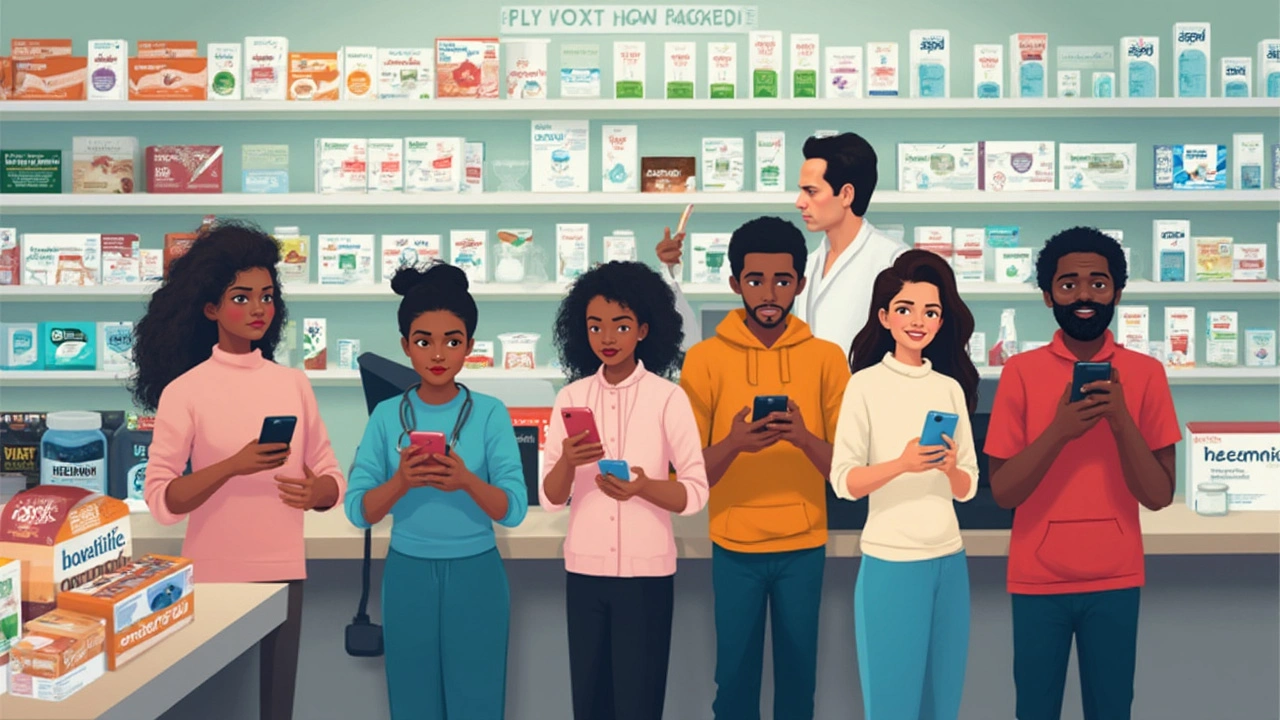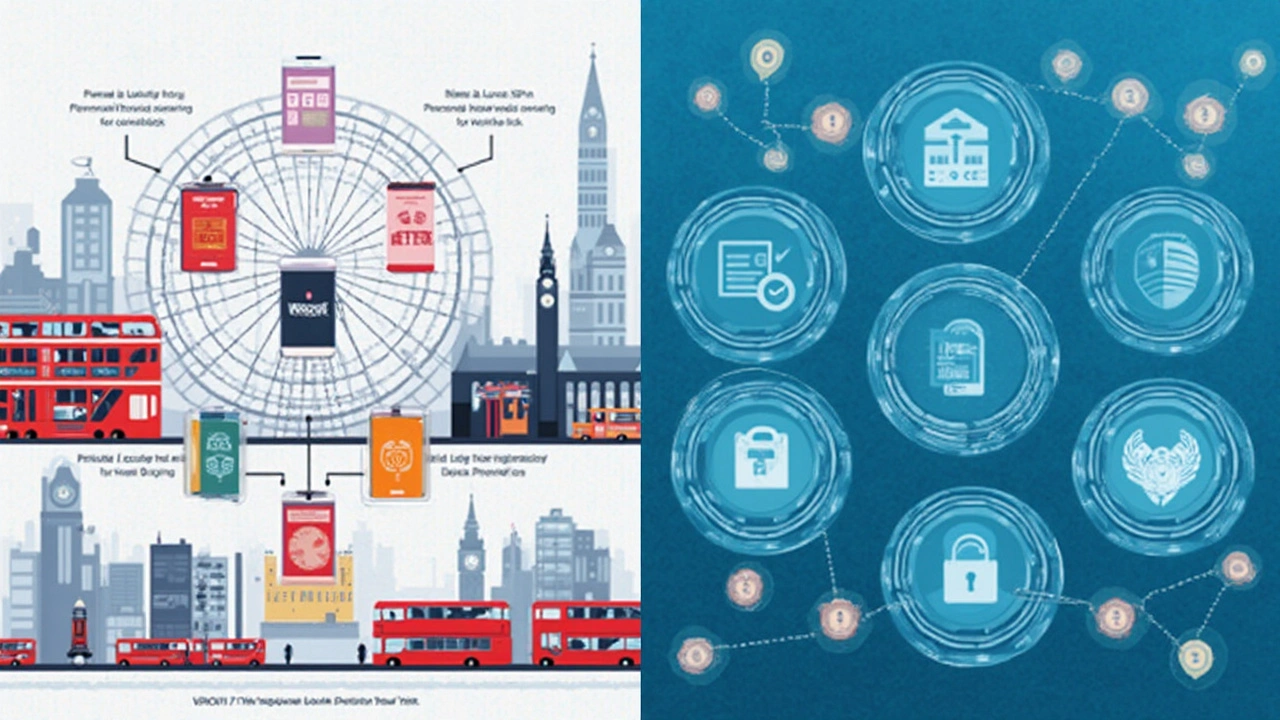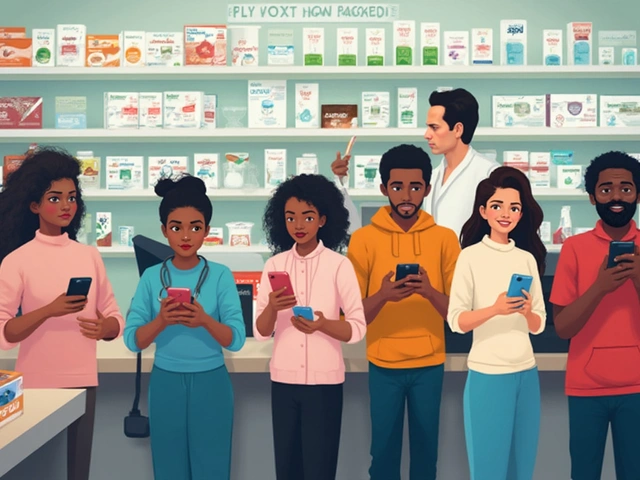
Prescription Discount Apps: Not Just GoodRx Anymore
Let me hit you with a number that might surprise you. In 2024, the average American spent over $1,400 a year on prescription drugs—before insurance. Drug prices in the U.S. haven’t gotten any friendlier. Blame big pharma, messy insurance policies, or just plain bad luck, but that’s where prescription discount apps scoop in. If you’re just using GoodRx, you’re probably missing out on deals. There’s a whole crop of apps promising lower prices and easy savings, and their user bases have exploded—over 100 million downloads between 2021 and 2024, with people from San Diego to New York trying to score a better deal on their meds.
But there’s more to this story than just discounts. Sure, saving $30 a refill feels nice, but are you handing over too much personal info just to shave a few bucks off your copay? How easy are these apps to actually use, and do they throw hidden fees at you? People want savings, not privacy headaches or sneaky memberships. Whether you’re looking for the best price on atorvastatin or you just want something less clunky than the GoodRx Gold interface, you’ve probably wondered what else is out there—and what exactly you’re signing up for.
Breaking Down Features: What Prescription Discount Apps Actually Offer
Let’s get under the hood of these apps. At a glance, all the major prescription copay tools—GoodRx, RxSaver, SingleCare, WellRx, and ScriptSave—claim virtually the same thing: deep discounts at your pharmacy of choice. But how do they really stack up in terms of features and everyday usability?
First, let’s talk price comparison. All five apps show you the local pharmacy prices, but not all take it as seriously as GoodRx, which is famous for listing multiple pharmacies by ZIP code, even including mom-and-pop spots. SingleCare plays this game, too, but sometimes cherry-picks chains. RxSaver tends to focus on big chains but throws in a few independents. WellRx lets you compare prices but sometimes leaves out small, family-owned pharmacies, which can be where the best deals hide.
Then there’s the coupon process. All these apps generate free digital coupons—just present your phone at the register. Sounds easy, but people get tripped up. For example, ScriptSave occasionally requires you to create an account, whereas with RxSaver and SingleCare, you usually don’t. If you hate giving out your email, this kind of detail matters.
Another thing: Many people want refill reminders or medication tracking. GoodRx offers this, but so do WellRx and SingleCare. RxSaver, on the other hand, is a bare-bones coupon generator—great for simplicity, but if you’re looking for extras, you’ll be underwhelmed.
Let’s not skip telehealth—think of online doctor visits, prescription renewals, and virtual consults. Both GoodRx and SingleCare now offer some level of online doctor access for quick renewals, usually with a fee, but it’s not always clear. RxSaver doesn’t, and ScriptSave is dipping its toes in, but it’s hardly front-and-center.
Mobile experience matters. GoodRx, SingleCare, and RxSaver are slick and rarely crash. WellRx is catching up but still has occasional bugs, going by hundreds of Play Store reviews. ScriptSave, while reliable, feels like a 2018 web app that never updated. If speed and zero frustration are important, you’ll notice the difference.
Here’s a tip: Always screenshot or print your coupon. Pharmacies sometimes get spotty cell signals, especially if you’re picking up meds at a big-box retailer with thick walls. Having a backup paper copy often saves a lot of headaches at the register.
| App | Account Required | Supports Small Pharmacies | Telehealth |
|---|---|---|---|
| GoodRx | No | Yes | Yes |
| SingleCare | No | Some | Yes |
| RxSaver | No | Some | No |
| WellRx | No | Few | Limited |
| ScriptSave | Yes | No | Some |

Fees, Fine Print, and Gotchas: Not Everything Is Free
Everybody loves “free,” but these prescription savings apps aren’t running a charity—they profit off referral fees from the pharmacy, and sometimes, those savings aren’t as absolute as they seem. Let’s break down where the dollars go and what’s potentially lurking in that fine print.
For starters, most “standard” coupons on GoodRx, SingleCare, RxSaver, and WellRx are indeed free for users. You present your phone, you get the discount, and you pay nothing to the app. But every so often, you’ll be prodded about “premium services.” GoodRx Gold is a paid subscription with bigger discounts and, sometimes, the exclusive “lowest price” badge. The same model pops up with ScriptSave WellRx’s premium membership. These usually run about $6–$10/month. If you take two or more prescriptions and the Gold or Premium price is at least $10/month lower, it can make financial sense, but for one-off antibiotics or seasonal meds, the standard coupons do just fine.
But watch out for price inconsistency. The price quoted on the app doesn’t always match what the pharmacy’s register pulls up. Sometimes it’s because the app’s deals have changed. Sometimes the software at the pharmacy misses the coupon. Pharmacies, especially those not chain affiliates, aren’t legally tied to accept every coupon app discount. Users report this happens about 5% of the time. So if your regular price is already low or you’re using insurance, do the math before assuming you’re always saving big.
Pharmacies are also required by law to let you choose between insurance and discount cards or coupons, but not to allow you to stack both. Pick one or the other—never both together.
Now, let me talk about hidden costs. SingleCare sometimes advertises “cashback” for using its coupon, but those are occasional rewards, not guaranteed. GoodRx and RxSaver steer clear of hidden fees, though their “specialist telehealth” visits can run anywhere from $19 to over $80 a pop—cheaper than urgent care, but not free. WellRx recently started nudging users toward a subscription with push notifications, which can be annoying if you’re strictly coupon-hunting.
It’s also critical to know these coupons work only for generic prescriptions, not brand-name drugs or controlled substances (think Adderall or Oxycodone), and never for medications covered under government programs like Medicare Part D or Medicaid. That’s a legal limit, not a stingy business decision—it’s federal law. If your only hope for savings is getting a discount on a high-demand controlled drug or brand-name med, don’t get your hopes up.
Final thing for this section: Check coupon expiration dates. GoodRx and SingleCare coupons usually say they never expire, but pharmacies can refuse old ones if their system updates. If you’re ever told the coupon doesn’t work, refresh the app and generate a new code. Never hurts to ask if the pharmacy can honor another app’s price, either—some will. Be flexible; sometimes switching from Walgreens to Costco, even if it’s an extra five minutes’ drive, can save you $100 or more a year, especially if you fill long-term prescriptions monthly.
How Safe Is Your Data? Privacy Policies and Risks
Here’s the privacy elephant in the room: When you use coupon apps, what happens to your info? Prescription discounts sound great until you realize you might be trading away personal data in exchange for those savings. GoodRx got zapped by the Federal Trade Commission for illegally sharing user health info with ad companies back in 2023. Since then, most major apps have scrambled to clean up their privacy act, but you still need to look carefully.
Here’s what’s really going on. Every time you use a coupon or create an account, you hand over something—a phone model, ZIP code, maybe your email or even prescription details. GoodRx, SingleCare, ScriptSave, WellRx, and RxSaver all say they don’t sell your health data, but nearly all share “aggregated” user behavior with third-party marketers and analytics companies. That means companies know what drugs are trending, which ZIP codes need which meds, and how often people are redeeming discounts. While it’s not your name-LinkedIn-style personally, it’s not nothing.
If you want pure anonymity, use apps that don’t require creating an account. GoodRx, RxSaver, and SingleCare allow anonymous coupon use, but ScriptSave requires an email for many deals. If you use the telehealth option with an app (like GoodRx Care), you’ll be giving up more sensitive info, just like with any online doctor’s office.
Now, here’s where some people feel blindsided. Apps like SingleCare might show you personalized recommendations or “suggest” new nearby pharmacies. This is based on past history, so the app is tracking usage even without a formal log-in. It’s not illegal, but if you care about digital fingerprints, it’s something to note. Always read privacy policies, but let’s be honest—few people do. Stick to apps that have faced outside audits or taken corrective action after privacy scandals; they’re under more scrutiny now than companies flying under the radar.
Your prescription info is protected under HIPAA at the pharmacy, but once you enter a third-party app, you’re in gray territory. If you’re paranoid (or just want to err on the side of caution), stick to apps that make privacy commitments in big, bold language and avoid ones that require way more details than needed to spit out a coupon. Never plug your full insurance ID or social security number into a coupon app—none of the major players require that, and if you find one that does, steer clear.
One cool tip: Use a unique email alias or even a throwaway email for account-required apps. That way, if you start getting unrelated marketing, you know who’s the culprit. And as of 2025, iPhone users can now use Apple’s “Hide My Email” feature for many coupon apps, which is a great privacy shield.
Data breach risk isn’t zero, but the big prescription coupon providers have so far dodged major hacks. Still, if you want a full breakdown of privacy details for apps like GoodRx, there’s now a handy comparison table—worth checking if you’re especially data-cautious. And if you ever have doubts, the best strategy is to use coupon apps anonymously, present only the minimum info at the pharmacy, and stay away from saving more details than you’re comfortable with on your device.
Here’s one weird fact: Many discount programs continue to exist because U.S. healthcare pricing is so wildly confusing. You’ll sometimes find that the price you get with a coupon app is hundreds of dollars lower than what your insurance copay would have been—proof that the pricing system is broken, but also that these apps aren’t going away anytime soon.


Honestly, these prescription discount apps are all just a slightly repackaged version of the same story. GoodRx might be the most popular, but hardly the best in terms of pricing transparency. They tend to hide their real fees behind glossy interfaces, making you think you're scoring big savings when in reality, it's often marginal.
And don’t get me started on privacy—these apps are basically selling your soul to advertisers. It’s like handing over your medical history to strangers with a smile. If anyone really thinks that's a good trade-off, well, good luck.
There are always alternatives, though, but most people just stick with what’s easiest without digging deeper. Would love to see more folks wake up to that.
It must be noted that the assumption that all prescription discount apps obscure fees and exploit user data is somewhat of an overgeneralization. If we delve into the specifics, certain platforms demonstrate commendable transparency both in terms of financial charges and privacy policies.
Yet, it is imperative to scrutinize the fine print in each case, as the landscape is indeed variegated. The nuances of data handling and fee structures demand rigorous examination to ascertain which application truly serves the consumer's interests.
A mere blanket skepticism does little to further the discussion at hand.
From a practical standpoint, I've noticed that some apps similar to GoodRx can offer comparable discounts but differ greatly in app usability and customer support. It's not just about the percentage saved but how easy it is for a user to find the discounts and redeem them at local pharmacies.
Additionally, privacy concerns shouldn't be overlooked; many of these apps do collect data, but transparency about usage varies. I always recommend reading the privacy policy or summaries from reputable reviews before committing to any app.
Did anyone here try a lesser-known app that outperformed GoodRx in any category?
OMG you guys, I never realized how little we actually think about where our data goes when we use these apps! 😱 I mean, it's one thing to save a few bucks on meds, but another to have your health info floating around who knows where.
Like, do these apps even tell us if they're sharing info with third parties? I bet most people just blindly click “accept.” Super scary stuff! 🤯 I wish there was a foolproof app that guaranteed privacy AND savings. Someone PLEASE make that happen soon! 💔💊
Allow me to offer a more methodical approach to this matter. When evaluating prescription discount applications, it is critical to consider a multi-factor analysis encompassing pricing transparency, data security measures, user interface quality, and customer service responsiveness.
Several platforms provide detailed disclosures in their terms of use, highlighting their commitment to user privacy, albeit occasionally couched in legal jargon.
From an academic perspective, rigorous comparison studies should guide consumer choices rather than anecdotal reviews or popularity metrics.
I've been experimenting with these apps for a while, mostly to see if the discounts really add up. It's interesting because some smaller apps do offer surprisingly better deals, but sometimes their pharmacy network is limited, which can be frustrating.
One thing the article highlights well is the privacy aspect—it's a crucial factor that many overlook until it's too late.
Do you guys think the trade-off between convenience and privacy is worth it? Curious to hear different takes on this.
Yeah, sure, like anyone here thinks these apps truly care about your privacy. It’s laughable to trust them when their whole business model is based on profiting off your data. That’s how capitalism works, right? Just throw up a veneer of privacy policy and watch people gobble it up.
And fees? Hidden, sneaky, or just plain ridiculous. But hey, if you want to keep paying full price without questioning anything, by all means. Some people seem to prefer being clueless consumers.
This conversation brings up such important points about balancing cost-savings with protecting personal information. I totally get wanting to save money, especially given how expensive prescriptions can be. However, I've made it a point to choose apps that are upfront about their data use because protecting our health info matters a lot.
Maybe if more people demanded better privacy controls, these apps would be more accountable. Until then, it’s about being as informed and cautious as possible.
One aspect I find particularly interesting is how these apps impact the larger healthcare ecosystem, especially pharmacies and insurance companies. By negotiating discounts independently, they might disrupt traditional models, but also introduce questions about long-term sustainability.
On the flip side, increased competition usually spurs better transparency and innovation, which benefits consumers. So, it's a complex interplay that merits deeper examination beyond just fee structures and privacy.
The philosophical dimension of relying on these apps intrigues me: we trade privacy for alleged convenience and savings. The question remains whether this transactional dynamic promotes genuine autonomy or rather a subtle form of commodification under the guise of consumer choice.
Is the accumulation and monetization of our health data ultimately a pathway to empowerment or enslavement? These are the considerations that must inform how we engage with digital healthcare tools.
Personally, I think people undervalue the cultural impact of these apps. They not only influence how we access medication but also reshape the societal dialogue about healthcare affordability and privacy norms.
I'm curious whether similar apps in other countries show different patterns in privacy respect or fee transparency due to cultural or regulatory differences. Anyone with international experience to share?